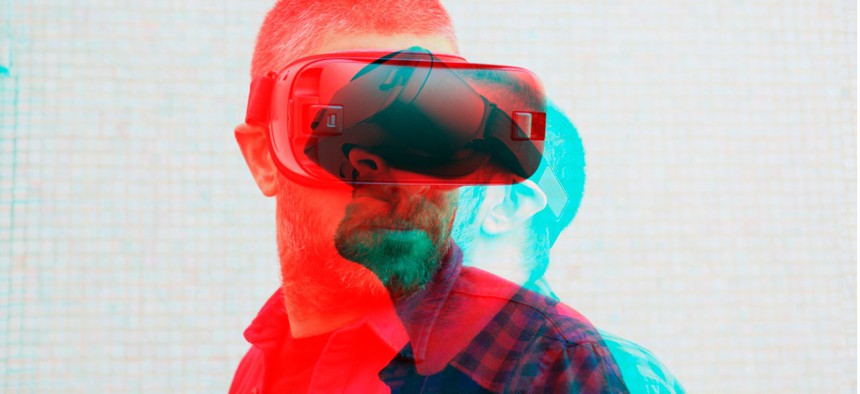DHS Considers Virtual Reality to Teach Officers About Responding to Hazardous Scenarios

tolgart/iStock.com
The agency is looking for technology solutions to help train Federal Protective Service staff when to use force—and when not to.
The Homeland Security Department’s Federal Protective Service aims to equip law enforcement personnel with body-tracking devices, imitation weapons and head-mounted displays that immerse them into virtual worlds—to ultimately improve how they respond to chaotic situations in the real world.
“FPS is in the process of developing officers’ skills in use of force and de-escalation techniques and is seeking to develop officers’ knowledge, skills, and attitudes concerning the proper use of force and de-escalation techniques via a virtual reality solution,” federal officials wrote in a request for information released Monday.
Often associated with augmented reality, which merges reality with virtual objects, virtual reality places a physical presence in virtual worlds. The government and military have been increasingly turning to both to support education and training, and experiment with 5G. Other agencies also published notices inquiring about AR and VR capabilities this month.
FPS is responsible for helping with the prevention of and recovery from detrimental attacks to the U.S., from criminals to terrorism or otherwise. According to its RFI, the agency “desires quick delivery of the virtual reality solution,” and is only interested in responses from vendors with existing options.
Officials listed a range of elements expected in the VR system they visualize, which they determined are needed to “develop officers’ skills” in the use of force and de-escalation.
Specifically, FPS is looking for a platform that includes a high-end gaming backpack and non-proprietary head-mounted display, paired with a kit that includes a “patrol rifle with sling, duty pistol, and taser replica,” among other components. The system must produce life-like avatars and include a tracking capability. FPS also wants it to capture bioanalytical data—like heart rate, stress level, and eye-tracking—which the agency could in turn leverage to analyze stress impacts on decision making.
“The user must have the ability to choose between their already owned simunition or blank firing weapons as well as virtually designed weapons. Physical feedback (blowback) when the weapon is fired must be noticed by the participant,” the RFI reads. “Transitioning between lethal and non-lethal options during a scenario must be available.”
Responses to the request are due July 30.






